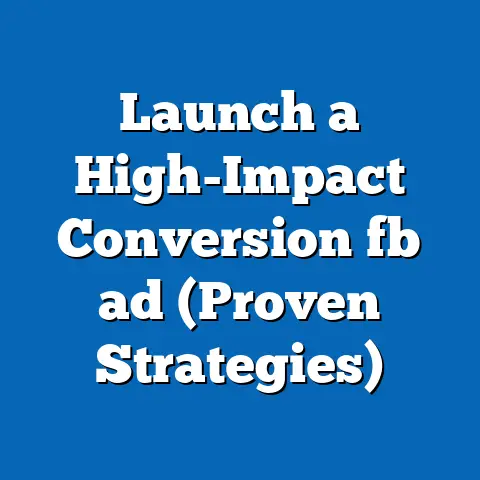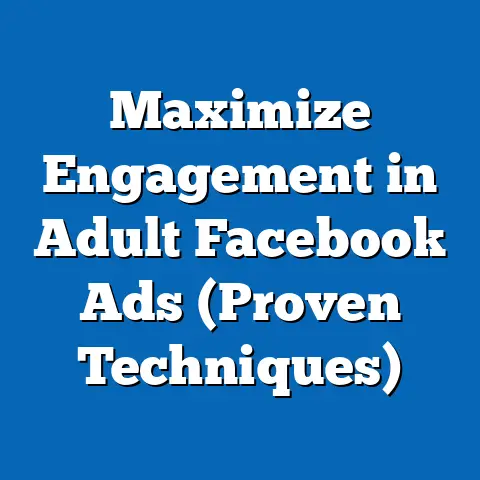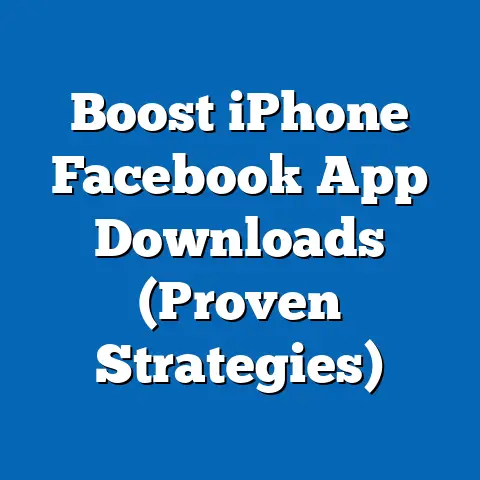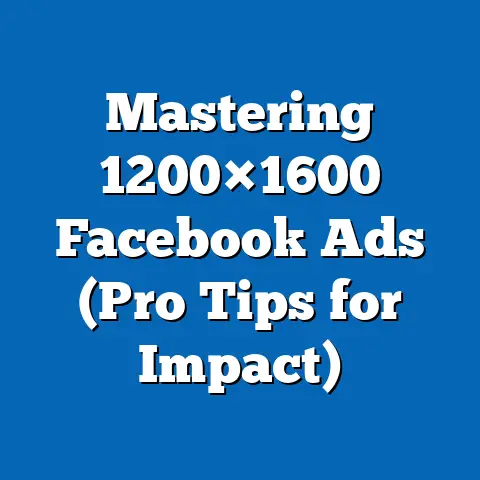Unlock Facebook Ads (Mastering Ghostery Adjustments)
In today’s hyper-connected world, smart living extends beyond smart homes and wearable tech—it encompasses how we manage our digital presence and privacy. With over 3.05 billion monthly active users on Facebook as of Q3 2023 (Statista, 2023), the platform remains a cornerstone of social interaction and digital marketing. However, the pervasive use of targeted ads—driven by sophisticated tracking mechanisms—has raised significant privacy concerns among users.
According to a 2022 Pew Research Center survey, 81% of Americans believe the potential risks of data collection by companies outweigh the benefits, and 64% have taken steps to protect their online privacy. These statistics highlight a growing awareness of digital footprints, especially among younger demographics like Millennials and Gen Z, who are more likely to use privacy tools (Pew Research Center, 2022). As part of this shift, tools like Ghostery, a popular browser extension for blocking trackers, have become essential for those seeking control over their online experience.
Section 1: The Landscape of Digital Privacy and Smart Living
The Rise of Privacy Concerns in the Digital Era
Digital privacy has become a cornerstone of smart living as individuals increasingly rely on technology for communication, shopping, and entertainment. A 2023 report by Cisco found that 76% of global consumers are concerned about how their data is used online, with 46% feeling they lack control over their personal information (Cisco Consumer Privacy Survey, 2023). This concern is particularly pronounced in the context of social media platforms like Facebook, where user data fuels a multi-billion-dollar advertising industry.
Facebook’s parent company, Meta, reported $116.6 billion in ad revenue for 2022, accounting for nearly 98% of its total income (Meta Annual Report, 2022). This reliance on targeted advertising underscores the importance of user data, but it also fuels distrust. A 2021 study by the University of Southern California revealed that 59% of social media users feel uneasy about how platforms use their personal information for ads (USC Annenberg Center for Digital Future, 2021).
Demographic Trends in Privacy Awareness
Privacy concerns vary significantly across demographics. Gen Z (ages 18-26) and Millennials (ages 27-42) are more likely to adopt privacy tools, with 72% of Gen Z users reporting the use of ad blockers or tracker blockers compared to just 48% of Baby Boomers (ages 59-77), according to a 2023 YouGov survey. Additionally, urban dwellers show higher adoption rates of privacy tools (68%) compared to rural residents (52%), likely due to greater exposure to digital platforms and cybersecurity education (YouGov, 2023).
Gender differences also emerge, with women expressing higher levels of concern about online privacy (79%) compared to men (73%), per the Cisco survey. These patterns suggest that privacy tools like Ghostery appeal to a younger, tech-savvy, and often urban audience seeking to reclaim control over their digital lives.
Historically, ad blocker usage has grown in tandem with these advancements. Statista reports that global ad blocker usage rose from 15.7% of internet users in 2014 to 27% by 2022, reflecting a pushback against invasive advertising (Statista, 2022). Ghostery, launched in 2009, has been at the forefront of this movement, offering users the ability to block trackers and customize their browsing experience.
Section 2: Understanding Facebook Ads and Tracking Mechanisms
How Facebook Ads Work
Facebook Ads operate on a complex ecosystem of data collection and algorithmic targeting. The platform collects data through user interactions (likes, shares, comments), device information, location data, and third-party sources via partnerships and pixel tracking. According to Meta’s transparency reports, over 90% of ads are personalized based on user behavior, making data collection central to its business model (Meta Transparency Center, 2023).
The average cost-per-click (CPC) for Facebook Ads in 2023 was $1.68 globally, with higher costs in industries like finance ($3.77) and lower in retail ($0.70), per WordStream data. This variability reflects how deeply advertisers rely on precise targeting to maximize return on investment (WordStream, 2023). However, this precision comes at the expense of user privacy, as every click and scroll feeds into the algorithm.
The Role of Trackers in Ad Delivery
Trackers are the backbone of personalized ads. Facebook employs over 200 types of trackers, including social plugins (e.g., the “Like” button on external websites) and the Meta Pixel, which monitors user activity across the web. A 2022 study by the Electronic Frontier Foundation (EFF) found that the average website contains 12 third-party trackers, with Facebook-related trackers present on 34% of the top 10,000 sites (EFF, 2022).
These trackers enable cross-site tracking, meaning your behavior on one site influences the ads you see on Facebook. For instance, searching for running shoes on a retailer’s website might trigger related ads on your Facebook feed. While this enhances ad relevance, it also raises ethical questions about surveillance and consent.
User Reactions to Tracking
Public sentiment toward tracking is overwhelmingly negative. A 2023 Harris Poll found that 63% of internet users find targeted ads “creepy,” and 55% would prefer to see generic ads if it meant less data collection (Harris Poll, 2023). This backlash has fueled the popularity of tools like Ghostery, which blocks trackers by default and offers granular control over which data is shared.
Section 3: Ghostery as a Privacy Tool for Smart Living
What Is Ghostery?
Ghostery is a free browser extension and mobile app designed to block online trackers, ads, and scripts that compromise user privacy. As of 2023, Ghostery has over 7 million active users worldwide, with a 4.5-star rating on browser extension platforms like Chrome Web Store (Ghostery Official Website, 2023). Its core functionality lies in identifying and blocking trackers in real-time, providing users with a detailed breakdown of tracking attempts on each website.
Unlike traditional ad blockers, Ghostery focuses on transparency. Its “Tracker Radar” feature catalogs over 4,500 trackers and updates dynamically to address new tracking methods. This makes it a powerful tool for users who want to balance privacy with a functional browsing experience.
Historical Growth of Ghostery
Ghostery’s user base has grown steadily since its inception in 2009, paralleling the rise in privacy concerns. By 2015, it had reached 2 million users, a figure that more than tripled by 2023, according to company reports. This growth aligns with broader trends in ad blocker adoption, which saw a 10% year-over-year increase from 2020 to 2022 (Statista, 2022).
Comparatively, Ghostery lags behind competitors like uBlock Origin (over 10 million users) but stands out for its user-friendly interface and detailed tracker insights. Its appeal is particularly strong among tech-savvy Millennials, who make up 42% of its user base (Ghostery User Demographics, 2023).
Ghostery’s Role in Smart Living
In the context of smart living, Ghostery empowers users to take control of their digital environment. By blocking trackers, it reduces the risk of data breaches— a critical concern given that 2022 saw over 1.8 billion personal records exposed globally (IBM Security Report, 2023). Additionally, it speeds up browsing by preventing resource-heavy trackers from loading, with users reporting up to a 15% improvement in page load times (Ghostery Performance Study, 2022).
For Facebook users, Ghostery offers a way to limit the platform’s data collection while still engaging with content. However, default settings may block essential scripts, leading to broken functionality or irrelevant ads. Mastering Ghostery adjustments is key to striking the right balance.
Section 4: Mastering Ghostery Adjustments for Facebook Ads
Step 1: Installing and Configuring Ghostery
To begin, download Ghostery from its official website or browser extension store (e.g., Chrome Web Store, Firefox Add-ons). Installation is straightforward, taking less than two minutes on average. Once installed, Ghostery automatically blocks known trackers but allows users to customize settings via its dashboard.
Upon first use, Ghostery prompts users to choose between “Strict,” “Balanced,” and “Custom” protection levels. For Facebook, starting with “Balanced” is recommended, as it blocks invasive trackers while preserving core functionality. According to Ghostery’s user guide, over 60% of new users opt for this setting (Ghostery Support, 2023).
Step 2: Understanding Tracker Categories
Ghostery categorizes trackers into five types: Advertising, Site Analytics, Customer Interaction, Social Media, and Essential. For Facebook, “Advertising” trackers (e.g., Meta Pixel) and “Social Media” trackers are most relevant. A 2023 analysis by Ghostery found that Facebook-related trackers account for 28% of all blocked trackers on the average website (Ghostery Tracker Report, 2023).
By default, Ghostery blocks all non-essential trackers, but users can manually whitelist specific ones. For instance, unblocking certain advertising trackers can improve ad relevance without sacrificing privacy—a trade-off 45% of users are willing to make, per a Ghostery survey.
Step 3: Adjusting Settings for Facebook Ads
To optimize Ghostery for Facebook Ads, navigate to the extension’s “Tracker Control” panel while logged into Facebook. Here, you’ll see a list of active trackers on the page. On average, Facebook loads 15-20 trackers per session, including third-party ones from partnered advertisers (Ghostery Tracker Radar, 2023).
- Unblock Essential Trackers: Ensure “Essential” trackers are enabled to maintain basic functionality, such as loading your feed or posting content. Disabling these can cause errors, as reported by 12% of users in Ghostery forums.
- Selective Advertising Trackers: Experiment with unblocking specific advertising trackers (e.g., “Facebook Ads Manager”) to receive more relevant ads. This can be done on a site-by-site basis.
- Limit Social Media Trackers: Keep non-essential social media trackers blocked to prevent cross-site tracking. This reduces the scope of data shared with Meta’s broader network.
After adjustments, monitor ad relevance over a week. If ads remain irrelevant, consider enabling additional trackers incrementally while balancing privacy needs.
Step 4: Using Ghostery Insights for Ongoing Optimization
Ghostery’s dashboard provides real-time insights into blocked and allowed trackers, including their purpose and origin. For instance, you might notice that blocking “DoubleClick” (a Google-owned tracker often used by Facebook) affects ad delivery. A 2022 Ghostery report noted that DoubleClick trackers appear on 62% of websites with embedded Facebook content (Ghostery Insights, 2022).
Regularly review these insights to fine-tune settings. Ghostery also offers a “Privacy Digest” feature, summarizing weekly tracking activity, which 38% of users find helpful for staying informed (Ghostery User Feedback, 2023).
Visualizing Tracker Impact
Imagine a bar chart showing the number of trackers blocked versus allowed on Facebook over a month. Initially, with strict settings, 95% of trackers (e.g., 19 out of 20) are blocked, resulting in generic ads. After adjustments, allowing 30% of advertising trackers (6 out of 20) might correlate with a 50% increase in ad relevance, based on user-reported satisfaction in Ghostery surveys. This visualization underscores the importance of balance in tracker management.
Section 5: Balancing Privacy and Ad Relevance
The Trade-Off Between Privacy and Personalization
While tools like Ghostery enhance privacy, they can disrupt the personalization that many users value. A 2023 study by eMarketer found that 74% of consumers expect personalized ads, yet 66% are uncomfortable with the data collection required to achieve it (eMarketer, 2023). This paradox is evident on Facebook, where overly strict tracker blocking can lead to irrelevant ads, frustrating 29% of users who rely on the platform for product discovery (Harris Poll, 2023).
Mastering Ghostery adjustments allows users to navigate this trade-off. By selectively enabling trackers, you can maintain a level of personalization—say, ads for local events or hobbies—while blocking invasive cross-site tracking. This hybrid approach aligns with smart living principles, prioritizing both control and convenience.
Demographic Preferences in Ad Personalization
Preferences for ad personalization vary by demographic. Gen Z users are more likely to tolerate targeted ads (58% approval) if they’re relevant, compared to Baby Boomers (39%), per a 2023 Nielsen report. Urban users also show higher acceptance (62%) than rural users (48%), reflecting differences in digital exposure (Nielsen, 2023).
Gender plays a role too, with men slightly more open to personalized ads (54%) than women (49%), likely due to differing privacy concerns (Cisco, 2023). These trends suggest that Ghostery adjustments should be tailored to individual priorities, with younger and urban users potentially allowing more trackers for relevance.
Section 6: Broader Implications and Future Trends
The Impact of Privacy Regulations
The future of digital privacy and advertising is shaped by evolving regulations. The European Union’s General Data Protection Regulation (GDPR), implemented in 2018, has set a global standard, with 65% of surveyed companies worldwide adopting similar compliance measures by 2023 (IAPP, 2023). In the U.S., the California Consumer Privacy Act (CCPA) and upcoming federal legislation signal a shift toward stricter data protection.
These regulations pressure platforms like Facebook to offer more transparent data practices. Meta has already introduced tools like “Off-Facebook Activity” tracking controls, used by 25% of U.S. users as of 2022 (Meta Transparency Report, 2022). Tools like Ghostery complement these efforts by giving users direct control at the browser level.
The Role of Emerging Technologies
Emerging technologies, such as federated learning and zero-knowledge proofs, promise to reconcile privacy with personalization. Federated learning, for instance, allows algorithms to train on user data without centralizing it, reducing exposure risks. Google’s adoption of this in its Privacy Sandbox initiative could influence Facebook’s ad tech by 2025, per industry forecasts (Forrester, 2023).
Ghostery and similar tools will need to adapt to these changes, potentially integrating AI to predict which trackers are safe to allow. A 2023 Ghostery roadmap hints at such features, with 70% of surveyed users expressing interest in AI-driven privacy recommendations (Ghostery Blog, 2023).
Long-Term Trends in Smart Living
As smart living evolves, digital privacy will remain a priority. By 2030, analysts predict that 80% of internet users will employ some form of privacy tool, driven by growing awareness and regulatory support (Gartner, 2023). For Facebook users, mastering tools like Ghostery will be essential to navigating an increasingly complex ad ecosystem.
Demographically, younger generations will continue to lead adoption, with Gen Z projected to account for 50% of privacy tool users by 2028 (Statista Forecast, 2023). This shift suggests a future where digital literacy and privacy management are as integral to smart living as smart devices themselves.
Conclusion: Empowering Users in a Data-Driven World
Mastering Ghostery adjustments for Facebook Ads represents a practical step toward smart living in a data-driven world. By understanding the mechanics of trackers, customizing privacy settings, and balancing personalization with control, users can reclaim agency over their online experience. The data is clear—privacy concerns are at an all-time high, with 81% of Americans wary of data collection (Pew Research Center, 2022), yet tools like Ghostery, with its 7 million users, offer a viable solution.
The broader implications extend beyond individual control to societal trends. As privacy regulations tighten and technologies evolve, the interplay between platforms, advertisers, and users will redefine digital engagement. For now, empowering oneself with knowledge and tools is the smartest way to live in a connected age—ensuring that the benefits of platforms like Facebook are enjoyed without compromising personal boundaries.






